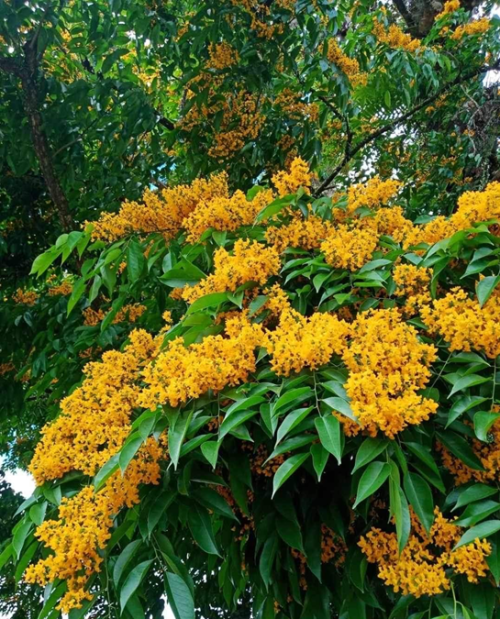Mapping of Significant Natural Resources
Mapping of Significant Natural Resources
Category: Natural Heritage
District of Malinao
LOCAL/INDIGENOUS NAME: Narra Tree
PHOTO: (Take a photo of the plant's habit, leaf, flower, fruit, trunk, crown)
I. BACKGROUND INFORMATION
A. OTHER COMMON NAME: Guinea rosewood, Burma rosewood, angsana, amboyna, Andaman redwood, mukwa and padauk
B. SCIENTIFIC NAME: Pterocarpus Indicus
C. CLASSIFICATION ACCORDING TO GROWTH HABIT: TREE
D. CLASSIFICATION ACCORDING TO ORIGIN: Native
E. HABITAT: land
F. SITE COLLECTED/SIGHTED: Malinao Elementary School, Roxas Avenue, Poblacion, Malinao, Aklan
G. INDICATE VISIBILITY: Visible in all barangays
F. SITE COLLECTED/SIGHTED: Malinao Elementary School, Roxas Avenue, Poblacion, Malinao, Aklan
H. INDICATE SEASONABILITY: PERENNIAL
II. DESCRIPTION
A. MORPHOLOGY
1. FLOWER: The flowers can be found on the upper leaf axils and terminal ends of the branches; the inflorescence is a branched cluster about 10-20cm long. The flower is bright yellow, fragrant and about 1.5 cm long. Each flower comprises of five petals, namely one broadly ovate to orbicular standard petal, two oblong wing petals and two oblong keel petals. Within the keel, there are 10 stamens which occur in two bundles of five.
2. LEAVES: Leaves are alternate, odd-pinnate (pinnate with an odd number of leaflets) and 20-25 cm long. The leaf stalk(petiole) is 1.5-4 cm long. Each leaf has 5-11 leaflets which are broadly ovate to elliptic shaped (4-15 cm long and 2-9 cm wide). The terminal leaflet is larger than the other leaflets. Each leaflet has 8-10 pairs of lateral veins and the midrib is flat or impressed above. The tip of the leaflet is abruptly acuminate to mucronate while the base is rounded to broadly cuneate. Stipule is lanceolate (1-1.5 cm long) and falls off early. Young leaves are sparsely hairy, becoming smooth and hairless as they mature.
3. FRUITING: The narra tree contains small fruits which are covered by membranous wings (pod) of (4-6) cm in diameter. The pod is disk shaped which is hairy when young and later turns to smooth. In the center part of the fruit, there may be one or two monocotyledonous seeds. The fruit ripens at the age of (4-6) years and it turns to purple when dried.
4. FRAGRANCE: The flowers of the narra tree has an extremely sweet fragrance.
5. SPECIAL NOTES: The narra tree is declared as the National Tree of the Philippines in 1934 by Governor-General Frank Murphy of the Insular Government of the Philippine Islands. It was made the national tree of the Philippines because it symbolizes people’s strength and power.
